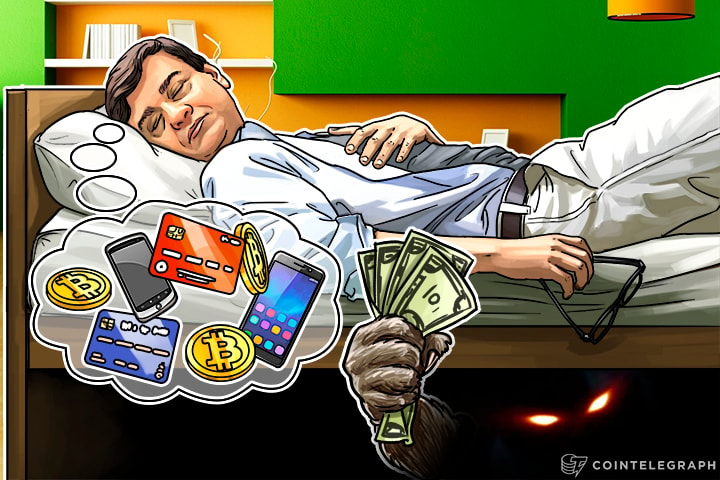How do you take the hatchet to one of the fastest growing economies in the world? Simple: Remove 86 percent of the circulating currency and call it an anti-corruption measure. Prime Minister Modi of India and his sidekick Urjit Patel, governor of the Reserve Bank Of India, seem to have gone ahead and done just that. Now that you don’t have any circulating cash, hey presto, you have a cashless economy. Welcome to the brave new India.
Cashless economy ahoy!
Indians are discovering that without their familiar Rs.500 and Rs.1000 banknotes that made up nearly 86 percent of all circulating cash, life is very difficult indeed. Middle class and upper class Indians have now taken to debit cards and credit cards.
India’s Hindu Business Line Newspaper reported that there has been a surge of 65 percent in transactions of less than Rs.500 made through debit and credit cards, post the demonetization that occurred on Nov. 8.
They go on to say: “Overall, the usage of debit cards has gone up 70 percent and of credit cards, by 40 percent, suggesting a sharp jump in first-time users.”
Part of this surge can be attributed to the fact that the government has waived off charges that are usually associated with these types of ‘cashless’ transactions.
Shadowy wallet operator capitalizes on the mess
The post-demonetization mess has been beneficial to one company in particular called PayTM, a wallet operator that is funded by China’s Alibaba group.
A day after the demonetization was announced, the wallet provider took out full page advertisements in major Indian newspapers thanking Prime Minister Modi, with the advertisment’s even featuring a gigantic image of the bearded PM.
Ironically, PayTM has been mired in controversy as India is also waging a ‘war on Chinese goods.’ The Diwali festival, which is celebrated across India, had Indians shunning goods ‘made in China’ as India’s northern neighbour continues to side with Pakistan over various issues including the Himalayan dispute in Jammu and Kashmir.
Firstpost recently covered how the Alibaba Group and its affiliate Ant Financial, have supported PayTM with funding to the tune of $680 mln.
The same story had PayTM’s Founder and Chief Executive Vijay Shekhar Sharma defending his enterprise by saying: “We are as Indian as Maruti is...We are 'India story' in every sense whatsoever."
Shekhar was referring to Maruti-Suzuki, the manufacturer of India’s iconic Maruti cars that are ubiquitous on the nation’s roadways.
Horde to be cashless first
There are now numerous parts of India that are competing to be completely ‘cashless.’ In fact, if shunning the use of paper money were an Olympic sport, India would perhaps be a serious contender for gold.
One such instance can be seen in the village of Akorda, the home state of Prime Minister Modi. The village of 1200 people took part in the ‘Digital Village’ initiative in January of 2015. Here an SMS-based payment system enables villagers to carry out transactions and the rate of adoption has been impressive, with close to 60 percent using the system. However, as the Times of India reports, all is not well in the digital village:
“The younger people use the SMS system. Older folk are not so comfortable with technology.”
If villages were not enough, a whole state wants to be cashless as well. The Indian state of Goa, which was a former Portuguese colony, has embarked upon the project to be totally cashless.
Famous for its beaches and Russian tourists, the state’s former Chief Minister, who is now India’s Defence Minister, told the Indian Express newspaper that:
“We all need to provide support to the Prime Minister in his decision. The Prime Minister has insisted on moving towards a cashless society. Goa will be the first State to achieve this goal.”
Not to be left behind, my home city of Chandigarh, which is a union territory and the capital of the states of Punjab and Haryana, has also declared that it would push to be totally cashless by Dec. 10.
Cashless pickle and unrealistic goals
The war on cash, as if cash is the source of all evil in the world, has led to a laughable situation in India.
The fact remains that half of the Indian population does not have access to any sort of credit or debit cards.
In addition, only 53 percent of the population has access to a bank account according to the World Bank. India still has an inadequate telecom network, which fails to reach the most remote parts and the total number of smartphone users falls within the region of 250 mln.
Add to this governance problems, with the government even going as far as to declare that no one has the right to privacy before the country’s Supreme Court. Security is a huge issue as the country is still reeling from a massive leak of debit card data that hit at least 3.2 mln debit card holders.
Perhaps the biggest factor that will lead to the failure of this cashless movement is that nearly 40 percent of Indians can’t read or write. The writing on the wall is clear for India - Demonetization has failed.


